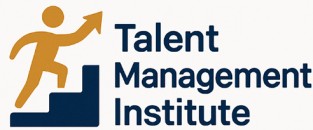
The Basics of Adverse Impact Analysis
Understanding the Concept
In the realm of talent management, adverse impact analysis plays a crucial role in examining whether employment practices inadvertently result in discrimination against a particular group. This form of analysis assesses the "impact" of these practices to ensure compliance with anti-discrimination laws such as Title VII of the Civil Rights Act. It is essential for employers to understand that an adverse impact occurs when an employment decision affects one protected group more harshly than others, even if this effect is unintentional.Key Elements and Measures
To accurately identify adverse impact, employers must evaluate various elements, such as selection rates for different groups during hiring. This involves employing quantitative methods like the "four-fifths rule" to determine if the selection rate for a protected group is less than 80% of the group with the highest selection rate. Such an analysis helps in drawing conclusions on the disparate treatment or adverse impact that might occur.Why It Matters
Understanding adverse impact is not just about legal compliance but also about promoting fair and equitable treatment within the workplace. Employers must regularly conduct impact analyses to identify potential risks and make informed employment decisions. This kind of introspective approach helps reduce liabilities linked to discrimination claims and fosters a diverse workforce. For more insights into fostering an inclusive workforce, consider exploring topics such as the role of an engagement coordinator here.Identifying Adverse Impact in Recruitment
Spotting Patterns in Recruitment
In the world of talent management, identifying potential adverse impact in recruitment is a crucial step. Adverse impact occurs when a seemingly neutral employment practice disproportionately affects members of a protected group, leading to disparate treatment. This can manifest in various parts of the hiring process, from the initial job posting to selection procedures.
The key to recognizing adverse impact starts with understanding how selection rates vary across different groups. An impact analysis involves examining these rates to uncover any patterns of disparity. Consider the "fifths rule," a widely used guideline suggesting that if the selection rate for a protected group is less than four-fifths (or 80%) of the rate for the group with the highest rate, adverse impact may be present. Ensuring compliance with Title VII of the Civil Rights Act is one reason why employers must be vigilant in monitoring their employment decisions for adverse impacts.
By conducting an thorough adverse impact analysis, organizations can unveil practices that, while legal, might still result in unintentional discrimination. It's not just about checking boxes for compliance; it's also about fostering a fair employment environment. Employers need to scrutinize their selection procedures to make sure that unconscious biases do not result in disparate impact.
For example, recruitment tests used during hiring should be regularly evaluated for any bias that could lead to discrimination. The use of validity testing can help ensure that these tests are both job-related and a business necessity. Identifying potential impacts early in the hiring process minimizes legal liability and aligns an organization’s practices with ethical standards.
Real-world examples show that employers who proactively identify and address adverse impact not only safeguard themselves from legal ramifications but also enhance their reputation as equitable employers. For more insight into how a company might structure roles to prevent adverse impacts during recruitment, you may explore the role of an engagement coordinator in talent management.
Legal and Ethical Considerations
Legal Considerations in Adverse Impact Analyses
Employers must navigate a complex legal landscape when performing adverse impact analyses, particularly when it comes to anti-discrimination laws. One of the primary legal frameworks guiding this area is Title VII of the Civil Rights Act, which prohibits employment discrimination based on race, color, religion, sex, or national origin. This forms the cornerstone of assessing whether hiring practices lead to unintended discrimination or disparate impact. The Uniform Guidelines on Employee Selection Procedures (UGESP) offer a reference point for employers to measure their selection procedures in the context of adverse impact. A critical concept under these guidelines is the "four-fifths rule," which suggests that if the selection rate for any protected group is less than four-fifths (or 80%) of the rate for the group with the highest selection rate, there might be evidence of disparate impact. However, this is not a definitive measure of discrimination but rather a trigger for further investigation. Non-compliance with these legal standards can lead to significant impact liability for employers. It's crucial that employment decisions are made with consideration to potential disparate treatment and ensure they do not unjustly affect any protected groups. In some cases, employers may justify practices that result in adverse impact by proving they are necessary for business necessity. This requires demonstrating that the selection criteria in question are related to the job and consistent with business needs. For instance, employers might need to establish that a specific test is essential for job performance and not merely a tool that induces bias against a particular group. Employers are also subject to various state and federal executive orders that further delineate the responsibilities and expectations regarding anti-discrimination in hiring practices. Keeping in line with these guidelines helps minimize impact liability and promotes fair employment practices across protected groups. For more insights into these legal considerations, familiarize yourself with the core principles of logistics that affect talent management here.Strategies to Mitigate Adverse Impact
Implementing Effective Strategies to Minimize Hiring Bias
Employers must be proactive in their efforts to mitigate the adverse impact in their hiring and selection practices. Recognizing potential discrimination within employment selection is the first step toward reducing disparate impact. Through a thorough examination of adverse selection rates, companies can craft targeted strategies that not only promote fairness but also comply with anti-discrimination laws like Title VII and the executive order safeguarding civil rights.- Conduct Regular Impact Analyses: Routine impact analyses help identify patterns of disparate treatment among protected groups. This process involves evaluating selection rates between different demographic groups and testing for discrimination using established methods like the fifths rule.
- Revise Selection Procedures: It's important for employers to reassess their selection procedures and employment tests, ensuring they are not biased and are related to the job and business necessity. Overly stringent or outdated criteria can contribute to impact liability and exclude qualified applicants unjustly.
- Enhance Training Programs: Implementing diversity training and awareness programs for HR personnel can reduce unconscious bias, allowing for more equitable employment decisions. Understanding the nuances of discrimination and disparate impact ensures staff are better equipped to implement fair hiring practices.
- Utilize Data-Driven Approaches: Leveraging data effectively in impact analysis can reveal trends and inequalities within the applicant pool. By examining disparate impact theory and utilizing impact analyses, employers can make evidence-based adjustments to mitigate potential liabilities and improve selection rates for underrepresented groups.
The Role of Data in Adverse Impact Analysis
The Power of Data in Understanding Adverse Impact
Data plays a crucial role in the assessment and analysis of adverse impact in talent management. Employers and hiring managers must leverage data-driven insights to ensure fair employment practices. By examining data thoroughly, organizations can identify patterns and trends that may indicate potential issues of discrimination or disparate treatment, particularly when it comes to protected groups.
Using data in this context involves analyzing the selection rate of different groups during recruitment and hiring phases. The analysis aims to detect any adverse impact that may arise from the company's selection procedures or employment decisions. If, for example, a test used during the hiring process consistently results in a lower selection rate for a certain protected group, it might signal an adverse impact.
One method often employed in these analyses is the "four-fifths rule." This rule suggests that if the selection rate for any group is less than 80% (four-fifths) of the rate for the group with the highest selection rate, then adverse impact may exist. This rule offers a straightforward and systematic approach to identify potential disparities that warrant further investigation.
Beyond identifying potential adverse impacts, data also helps organizations comprehend their business necessity for maintaining certain employment practices. By articulating and documenting the legitimate reasons behind specific hiring criteria, companies can defend their practices if challenged under Title VII or other anti-discrimination laws.
Analyzing data also involves performing a comprehensive impact analysis. This process assesses the practices and their implications to ensure alignment with both legal standards and ethical expectations. When used effectively, data not only uncovers potential liabilities but also guides organizations toward more equitable and effective talent management strategies.
Case Studies and Real-World Examples
Real-World Insights into Adverse Impact Analysis
Understanding the impact of adverse impact analysis in talent management is crucial for employers aiming to ensure fair employment practices. Real-world examples provide valuable insights into how organizations can identify and address disparate impact in their hiring processes.
Case Study: Retail Chain's Hiring Practices
A well-known retail chain faced allegations of discrimination due to their hiring practices. The adverse impact analysis revealed that their selection procedures disproportionately affected a protected group, leading to a lower selection rate for minority applicants. By applying the four-fifths rule, the company identified a significant disparate impact, prompting a review of their employment decisions.
Legal Implications and Adjustments
In response to potential legal liability under Title VII of the Civil Rights Act, the retail chain implemented changes to their selection procedures. They introduced more inclusive job tests and adjusted their recruitment strategies to ensure compliance with anti-discrimination laws. This proactive approach not only mitigated legal risks but also enhanced their reputation as an equal opportunity employer.
Impact of Data-Driven Decisions
Another example involves a tech company that utilized data-driven impact analyses to refine their hiring processes. By analyzing selection rates across different applicant groups, they identified patterns of disparate treatment. The company then adjusted their employment practices, ensuring that their hiring decisions were based on business necessity rather than biased criteria.
Lessons Learned
- Employers must regularly conduct adverse impact analysis to identify potential discrimination in their hiring practices.
- Legal and ethical considerations should guide adjustments to selection procedures to avoid disparate impact.
- Data plays a crucial role in understanding and mitigating adverse impact, helping employers make informed decisions.
These real-world examples highlight the importance of continuous evaluation and adjustment of hiring practices to promote fairness and compliance in talent management.













